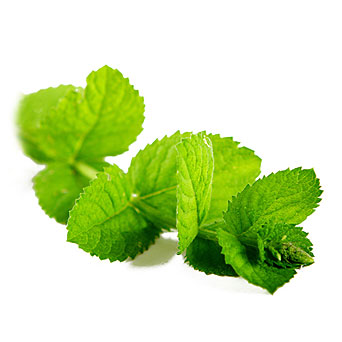Blackburn L, Achor S, Allen B, Bauchmire N, Dunnington D, Klisovic RB, Naber SJ, Roblee K, Samczak A, Tomlinson-Pinkham K, Chipps E Oncology Nursing Forum, 2017 ABSTRACT: PURPOSE/OBJECTIVES: To determine if the use of aromatherapy improves insomnia and other common symptoms in hospitalized patients with newly diagnosed acute leukemia. DESIGN: A randomized, crossover, washout trial. SETTING: An inpatient acute leukemia unit at the Arthur G…. Read more »

The repellent efficacy of eleven essential oils against adult Dermacentor reticulatus ticks
Štefanidesová K, Škultéty Ľ, Sparagano OAE, Špitalská E Ticks and Tick-borne Diseases, 2017 ABSTRACT: Dermacentor reticulatus ticks are among the most important arthropod vectors of zoonotic disease agents in Europe. Eleven essential oils, namely basil (Ocimum basilicum), bergamot (Citrus bergamia), clove bud (Syzygium aromaticum), citronella (Cymbopogon winterianus), creeping thyme (Thymus serpyllum), lavender (Lavandula angustifolia), lemon-scented… Read more »
The in vitro Antimicrobial Activity and Chemometric Modelling of 59 Commercial Essential Oils against Pathogens of Dermatological Relevance.
Orchard A, Sandasi M, Kamatou G, Viljoen A, van Vuuren S Chemistry & Biodiversity, 2017 ABSTRACT: This study reports on the inhibitory concentration of 59 commercial essential oils recommended for dermatological conditions, and identifies putative compounds responsible for antimicrobial activity. Essential oils were investigated for antimicrobial activity using minimum inhibitory concentration assays. Ten essential oils… Read more »
Neuroprotective and Anti-Aging Potentials of Essential Oils from Aromatic and Medicinal Plants
Ayaz M, Sadiq A, Junaid M, Ullah F, Subhan F, Ahmed J Frontiers in Aging Neuroscience, 2017 ABSTRACT: The use of essential oils (EOs) and their components is known since long in traditional medicine and aromatherapy for the management of various diseases, and is further increased in the recent times. The neuroprotective and anti-aging potentials… Read more »
Essential oils diversely modulate genome-wide gene expression in human dermal fibroblasts
Han X, Parker TL Cogent Medicine, 2017 ABSTRACT: The increasing popularity of essential oils for skincare has led to investigation of their biological effects in human skin cells. In this study, we investigated the biological activities of three commercially available essential oils, i.e. rosemary oil, wild orange oil, and a blend (commercial name: Deep Blue)… Read more »
Preclinical development and clinical use of perillyl alcohol for chemoprevention and cancer therapy
Chen TC, Fonseca CO, Schönthal AH American Journal of Cancer Research, 2015 ABSTRACT: Perillyl alcohol (POH) is a naturally occurring dietary monoterpene isolated from the essential oils of lavender, peppermint, and other plants. Medical interest in this compound was generated by research findings showing that POH was able to inhibit the growth of tumor cells… Read more »
Essential oils and their constituents as anticancer agents: a mechanistic view
Gautam N, Mantha AK, Mittal S BioMed Research International, 2014 ABSTRACT: Exploring natural plant products as an option to find new chemical entities as anticancer agents is one of the fastest growing areas of research. Recently, in the last decade, essential oils (EOs) have been under study for their use in cancer therapy and the… Read more »
An effect of peppermint herb (Mentha piperita L.) pressing on physico-chemical parameters of the resulting product
U Sadowska, A Żabińskia, A Szumnyb, K Dziadekc Industrial Crops and Products, 2016 ABSTRACT: The aim of the study was to evaluate the effect of peppermint herb pressure agglomeration process on biologically active compounds’ content, antioxidant activity, resulting product compaction, and color of the new form of mint tea infusions. The separated fractions of mint… Read more »
Regulation of monoterpene accumulation in leaves of peppermint
Gershenzon J, McConkey ME, Croteau RB Plant physiology, 2000 ABSTRACT: Plants synthesize numerous classes of natural products that accumulate during development and are thought to function as constitutive defenses against herbivores and pathogens. However, little information is available about how the levels of such defenses are regulated. We measured the accumulation of monoterpenes, a model… Read more »
Combined non-adaptive light and smell stimuli lowered blood pressure, reduced heart rate and reduced negative affect
Dong S, Jacob TJ Physiology & behavior, 2016 ABSTRACT: Bright light therapy has been shown to have a positive impact on seasonal affective disorder (SAD), depression and anxiety. Smell has also has been shown to have effects on mood, stress, anxiety and depression. The objective of this study was to investigate the effect of the… Read more »
